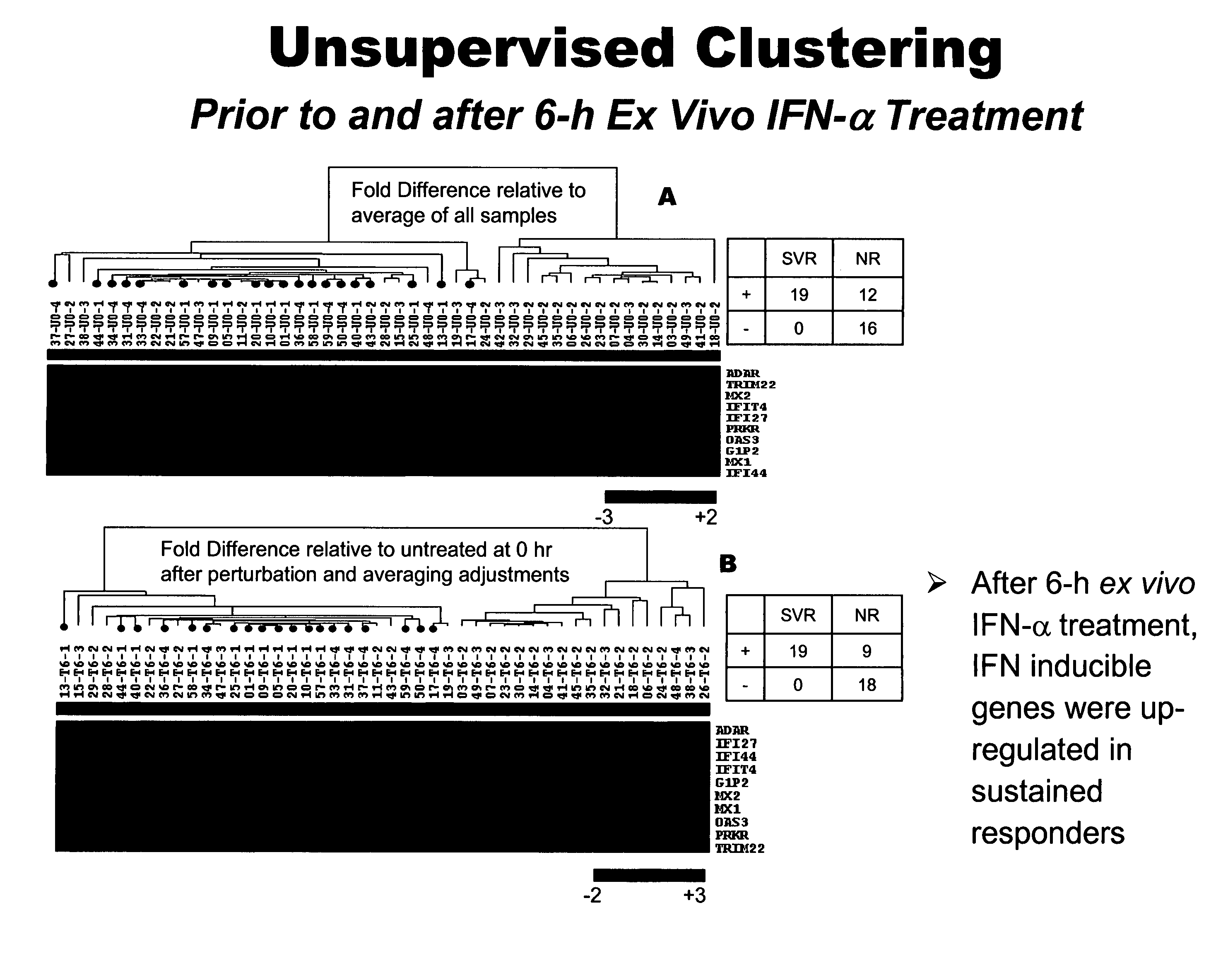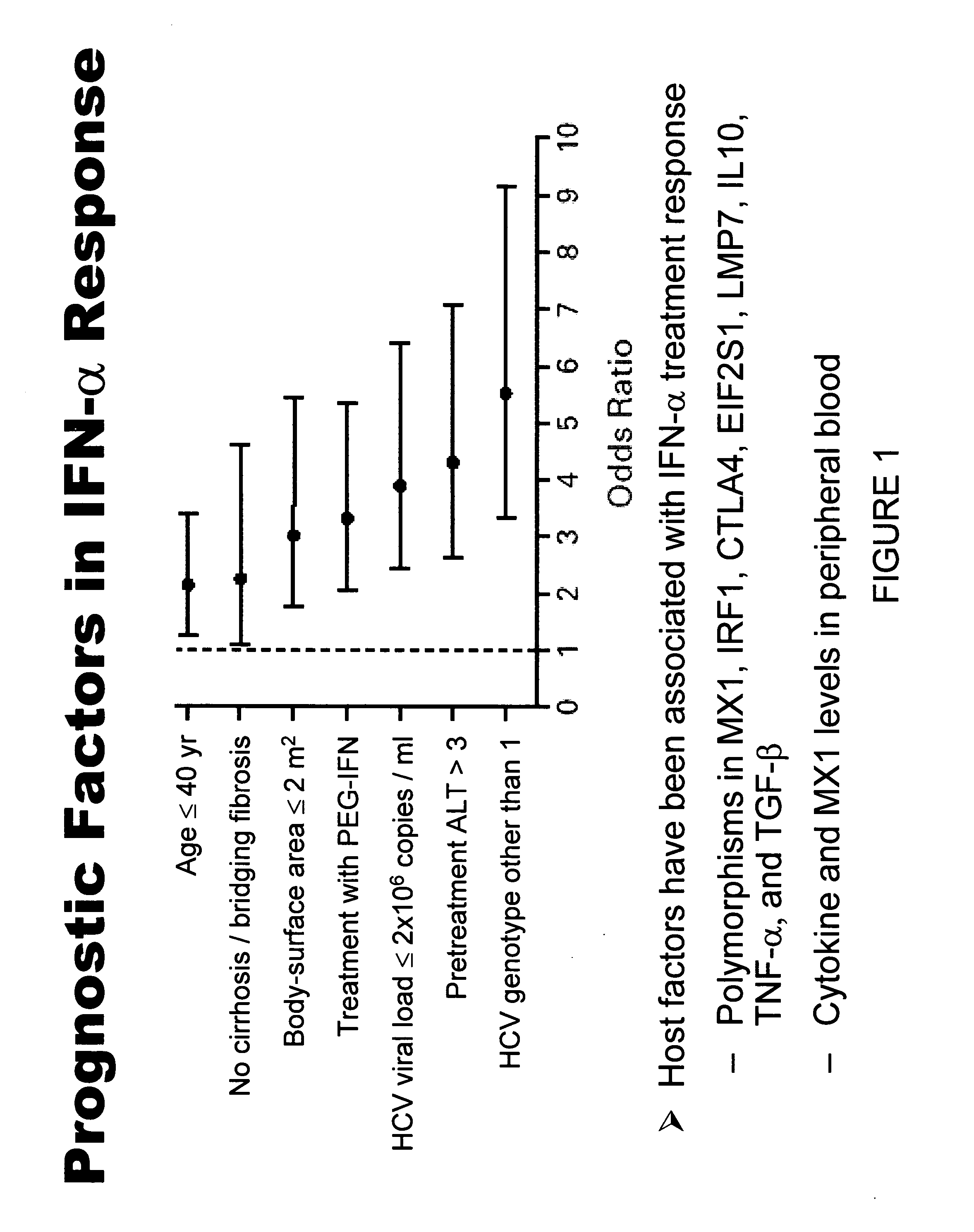Biomarkers for interferon-alpha response in hepatitis C virus infected patients
a technology of interferon and alpha response and hepatitis c virus, which is applied in the field of identification of biomarkers, can solve the problems of 15% of patients sustained undetectable, and achieve the effect of more informed decisions
- Summary
- Abstract
- Description
- Claims
- Application Information
AI Technical Summary
Benefits of technology
Problems solved by technology
Method used
Image
Examples
examples
[0134] The following working examples are offered to illustrate, but not to limit the claimed invention.
[0135] Some of the prognostic factors currently used to determine if an HCV infected patient will respond to IFN-α treatment are shown in FIG. 1. These factors include age of the patient, presence of cirrhosis / fibrosis, patient size (ie., body surface area), treatment type, viral load, and viral genotype. The odds ratios that each factor has in increasing the likelihood of responding to treatment are indicated. Host factors such as genetic polymorphisms, and cytokine levels are also indicated. The characteristics of the patients from whom samples were obtained for use in the study described below are listed in FIG. 2. Marker gene expression levels were determined in a total of 47 patients.
[0136] Approximately 30 mls of blood was obtained from each patient and processed as outlined in FIG. 3. Briefly, Peripheral Blood Mononuclear Cells...
PUM
| Property | Measurement | Unit |
|---|---|---|
| Time | aaaaa | aaaaa |
| Time | aaaaa | aaaaa |
| Cell angle | aaaaa | aaaaa |
Abstract
Description
Claims
Application Information
 Login to View More
Login to View More - R&D
- Intellectual Property
- Life Sciences
- Materials
- Tech Scout
- Unparalleled Data Quality
- Higher Quality Content
- 60% Fewer Hallucinations
Browse by: Latest US Patents, China's latest patents, Technical Efficacy Thesaurus, Application Domain, Technology Topic, Popular Technical Reports.
© 2025 PatSnap. All rights reserved.Legal|Privacy policy|Modern Slavery Act Transparency Statement|Sitemap|About US| Contact US: help@patsnap.com



